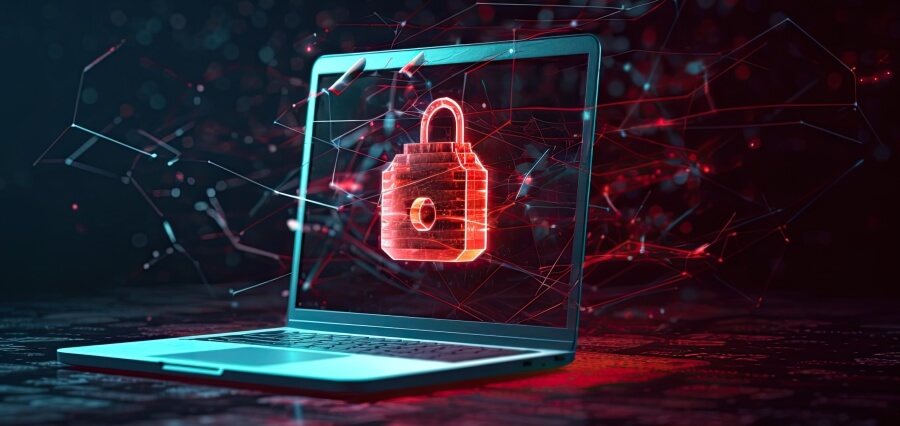The greatest danger to our cybersecurity often lurks within our own walls. How can CISOs effectively address insider threats and safeguard their organizations?
Cybersecurity has become a cornerstone in protecting organizations from an ever-expanding array of threats. While external threats like hackers and malware often grab the headlines, the significance of insider threats cannot be overstated. Insiders, whether intentionally malicious or unwittingly negligent, pose a substantial risk to an organization’s sensitive data and digital infrastructure. For Chief Information Security Officers (CISOs), the challenge lies in navigating this complex landscape to secure their organizations from within.
Understanding Insider Threats
Insider threats can manifest in various forms, from employees with malicious intent seeking financial gain or revenge to well-meaning staff who inadvertently compromise security through negligence. In fact, a 2021 Insider Threat Report found that 68% of organizations feel vulnerable to insider attacks. This underscores the urgency for CISOs to adopt a comprehensive approach to address this multifaceted challenge.
The first step in tackling insider threats is acknowledging that they exist. No organization is immune, regardless of its size or industry. As a CISO, it’s imperative to cultivate a culture of cybersecurity awareness within the organization and foster an environment where employees understand the potential risks associated with their actions.
Building a Culture of Cybersecurity Awareness
How can you expect your employees to safeguard your organization if they don’t understand the value of the information they’re protecting?
Creating a culture of cybersecurity awareness starts with education. Regular training sessions and workshops should be conducted to keep employees informed about the latest cybersecurity threats, including the potential impact of insider threats. This education should extend beyond the IT department to reach all levels of the organization. When everyone understands the risks, they are more likely to actively contribute to the organization’s cybersecurity efforts.
Additionally, implementing strong access controls and monitoring mechanisms is essential. Limiting access to sensitive information on a need-to-know basis reduces the likelihood of unauthorized or unintentional data exposure. Regularly reviewing and updating access permissions, especially when employees change roles or leave the organization, is crucial to maintaining a secure environment.
Implementing User Behavior Analytics
It’s not just about what people do, but how they do it. Understanding user behavior is key to detecting potential insider threats before they escalate.
User Behavior Analytics (UBA) plays a pivotal role in identifying anomalous activities that may indicate insider threats. By establishing a baseline of normal user behavior, security systems can detect deviations that may signal a potential security risk. For example, sudden access to sensitive data by an employee who has never accessed it before or irregular login times can trigger alerts for further investigation.
CISOs should leverage advanced technologies, such as machine learning algorithms, to enhance the accuracy of UBA. These technologies can analyze vast amounts of data and detect patterns that may elude traditional security measures. Investing in UBA not only strengthens an organization’s defenses but also allows for more proactive threat mitigation.
Monitoring Privileged Users
With great power comes great responsibility, and privileged users are no exception. Monitoring their activities is a critical aspect of insider threat prevention.
Privileged users, such as system administrators and executives, have elevated access levels that make them potential targets or unwitting conduits for insider threats. CISOs must implement robust monitoring systems to track the activities of privileged users, ensuring that their actions align with their roles and responsibilities.
Regular audits and reviews of privileged user access logs can reveal any suspicious behavior or unauthorized access. This proactive approach enables CISOs to intervene promptly and mitigate potential threats before they escalate. Moreover, it sends a clear message that all users, regardless of their position, are subject to scrutiny to maintain a secure environment.
Establishing a Whistleblower Program
Sometimes, the most valuable insights come from within. Encourage employees to speak up if they notice anything amiss.
A whistleblower program provides employees with a confidential channel to report suspicious activities without fear of reprisal. CISOs should work in collaboration with HR and legal teams to establish a robust and anonymous reporting mechanism. This encourages a sense of shared responsibility for cybersecurity and can be an invaluable source of early detection for insider threats.
To ensure the effectiveness of the whistleblower program, it’s essential to communicate its existence clearly and regularly. Employees should be informed about the importance of reporting any concerns promptly, emphasizing that their contributions play a crucial role in safeguarding the organization.
Responding to Insider Threat Incidents
Prevention is ideal, but preparation is imperative. Having a well-defined incident response plan is essential when addressing insider threats.
No cybersecurity strategy is foolproof, and insider threats may still occur despite the best preventive measures. CISOs must have a well-defined incident response plan in place to mitigate the impact of a potential breach swiftly.
The incident response plan should outline clear procedures for identifying, containing, and eradicating insider threats. This includes collaboration with the legal and HR teams to handle potential legal and personnel issues. Regularly testing and updating the incident response plan ensures its effectiveness when faced with the dynamic nature of insider threats.
Conclusion
In the realm of cybersecurity, the real challenge often lies not in the complexity of technology but in understanding human behavior. CISOs must address insider threats with a combination of technological solutions, cultural initiatives, and proactive measures.
As CISOs navigate the ever-evolving landscape of cybersecurity, addressing insider threats should remain a top priority. By building a culture of cybersecurity awareness, implementing advanced technologies like UBA, monitoring privileged users, establishing whistleblower programs, and having a robust incident response plan, CISOs can strengthen their organizations from within. The journey towards a more secure future begins by recognizing that the greatest threats may be those working within our own walls, and the key to success lies in a proactive and holistic approach to cybersecurity.







